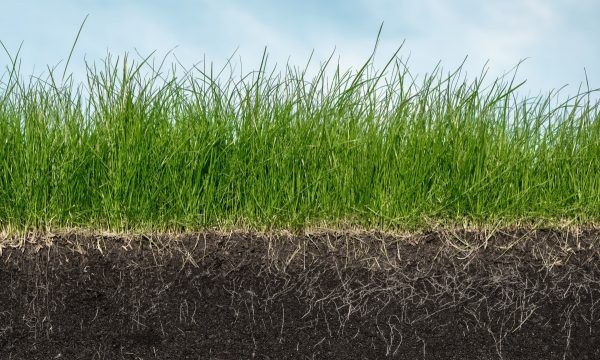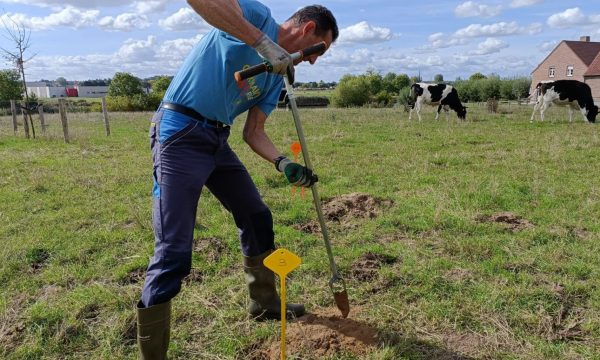Press release Offshore wind farms increase carbon storage in seabeds - useful knowledge for marine spatial planning and climate change modeling
Marine animals that grow on offshore wind turbines (such as mussels) affect the seabed. That much we already knew, but thanks to recent Belgian-Dutch research results, we now know exactly how important this effect is. The results were presented in two recently published papers. These describe in detail how organic material is concentrated in and around the wind farms and deposited at a greater distance in lower quantities. This increases carbon storage in the seabed of the wind farms, which is important in the context of climate compensation, but also changes within the sometimes fragile benthic fauna. The results can contribute to decision-making on sensitive issues such as the spatial planning of offshore wind farms in marine protected areas and the future decommissioning of offshore wind turbines.
As part of the transition from non-renewable (fossil) to renewable energy sources, the number of offshore wind farms is increasing worldwide. This is also the case in Belgium, currently the fifth largest producer of offshore wind energy in the world. A new offshore wind zone, the Princess Elisabeth Zone, has been inscribed on the Belgian Marine Spatial Plan for the period 2020-2026. This will more than double the area reserved for national offshore wind energy production (from 238 to about 530 km²) and almost double the capacity (from 2.26 to >4.26 Gigawatts). The new zone partly coincides with the protected sea area "Vlaamse Banken", een aangewezen Natura 2000-area under the EU-Habitat Directive.

Thirteen years of monitoring the ecological effects of wind farms in the 1st Belgian offshore wind zone showed that large quantities of invertebrates (mussels, anemones, small crustaceans, etc.) grow on the turbines, and that these in turn attract fish species such as cod and plaice. However, knowledge surrounding colonizing species and their effects on the marine ecosystem was largely limited to the level of individual turbines and wind farms.
Geographical scale increases
The FaCE-It project (Functional biodiversity in sediments subject to change: implications for biogeochemistry and food webs in a management context), which ran over the period 2015 - 2020, greatly expanded this knowledge.
"In FaCE-It, we studied the effects of offshore wind farms on the functioning of the marine ecosystem. For the first time ever, we also examined the effects of multiple offshore wind farms in multiple countries at a large geographic scale. A combination of detailed observations, experiments and model simulations were used, with a focus on the effects of wind farms on the functioning of the seabed." explains project coordinator Jan Vanaverbeke of the Royal Belgian Institute of Natural Sciences.
The project partners present their findings in two articles in Frontiers in Marine Science.


Changes in organic enrichment of the seabed (Ivanov et al., 2021)
Animals that colonize wind turbines filter food from the water column, and then provide a supply of organic material to the sea floor around the turbines, both in the form of their droppings and dead organisms that fall down. But where exactly does this organic material end up? That could be verified through models that describe water currents (hydrodynamics, including tides and waves) and the transport of sediments. Those models were coupled with knowledge about the dynamics of organic carbon and mineral particles in the water column and sediments. That integration of data clearly showed that the presence of offshore wind farms leads to strong changes in the deposition of organic matter on the seabed, both inside and outside the wind farms. Since this organic matter is the food for the organisms inhabiting the seabed, this may affect (part of) the food chain.
Evgeny Ivanov from the University of Liege explains, "Within offshore wind farms, and in the areas surrounding them, significantly more organic material ends up on the bottom (up to 15%, and locally even up to 50% more), especially in the areas located along the strongest tidal currents (according to a NE/ZW axis relative to the turbines). In the other directions (to NW and SE), a decrease in organic matter deposition is predicted (up to 10% less). Multiple offshore wind farms will thus result in a mosaic of areas of increased and decreased carbon deposition on the seafloor. In the wind farms and in an area of 5 km around the turbines, the resulting picture is positive (more organic matter), while deposition in the surrounding area up to 30 km further away decreases significantly."

Carbon storage in offshore wind farms (De Borger et al, 2021)
The increased organic enrichment results in greater carbon sequestration in the seabed of an offshore wind farm. Emil De Borger, then at Ghent University and now at the Royal Netherlands Institute for Sea Research (NIOZ), calculated the exact amount of carbon involved: "During the lifetime of an offshore wind farm (defined here as 20 years), between 28,715 and 48,406 tons of carbon are stored in the top 10 cm of the seabed in offshore wind farms. This carbon is also known as "blue carbon," carbon that is trapped in organic forms (such as animals or plants) and then buried. Knowing that these figures correspond to 0.014-0.025% of annual greenhouse gas emissions in Belgium, this can be considered a small, but nevertheless significant carbon offset."
This carbon offset is in addition to the much larger amount of carbon (CO2) not emitted by using a renewable rather than a fossil energy source. For comparison, in Belgium, CO2 emissions would be reduced between 1.04 and 2.86 million tons by using wind-generated energy instead of a gas turbine (based on 2018 data). The estimated amounts of carbon stored in sediment contribute another 1 to 4.6% to this.

Consequences for the spatial planning of offshore wind farms
These findings have important implications for the design of new offshore wind farms in and near the Marine Protected Area (MPA) of the Flemish Banks. Within this MPA there are valuable and endangered gravel banks, which are home to rare species and protected by EU legislation. An increase in deposition of organic material would not necessarily mean a positive story for these rare species. The choice of location of the new offshore wind farms will determine the magnitude of the impact on the gravel banks to a much greater extent than the number of turbines does, and careful implantation of the turbines is therefore necessary if offshore wind farms and gravel banks are to coexist in an environmentally sound manner within the MPA of the Flemish Banks.
Using the model developed in FaCE-It, it was calculated that the placement of the new offshore wind farm at least 3 km downstream of the gravel beds would only result in a moderate increase in organic matter deposition. If the offshore wind farm were chosen to be located upstream, it is recommended that a distance of 7 km be maintained. In the direction perpendicular to the tidal current, a distance of 2 to 4 km is recommended.
It is also illustrated that nature has no geopolitical boundaries. Effects cross national borders: future offshore wind farms in the neighboring French part of the North Sea will affect the Belgian part, while the operational Belgian offshore wind area already affects the Dutch part of the North Sea.
Carbon sequestration - temporary?
The increased carbon storage in the sediments in and around offshore wind farms - and thus the climate-regulating effect - may be of limited duration. If the seabed is disturbed, the stored carbon may be released back into the water column. This can happen as a result of bottom-disturbing activities such as trawling (allowed outside a 50 m radius around individual turbines in the UK and France, but completely prohibited in Belgium, the Netherlands and Germany during the operational phase of the wind farms, where it can potentially be allowed again after their decommissioning), or when the concession zones are restored to their original state after the expected lifetime of the wind turbines (20-25 years).
Therefore, the FaCE-It results on carbon storage in sediments are not only useful to support spatial planning of offshore wind farms, but can also inform decisions on future decommissioning scenarios and methods. One possible scenario in this regard is partial decommissioning, where part of the subsea structure remains in place, is repurposed or relocated.
FaCE-It (Functionele biodiversiteit in sedimenten onderhevig aan verandering: implicaties voor de biogeochemie en voedselwebben in een management context) is a project funded by the Federal Science Policy (Belspo), coordinated by the Royal Belgian Institute for Natural Sciences (KBIN), and a partnership between KBIN, the Marine Biology Research Group of Ghent University, the VResearch Group Astrophysics, Geophysics and Oceanography of the University of Liège, Flanders Research Institute for Agriculture, Fisheries and Food (ILVO) and the Royal Dutch Insitute for Marine Research (NIOZ).



